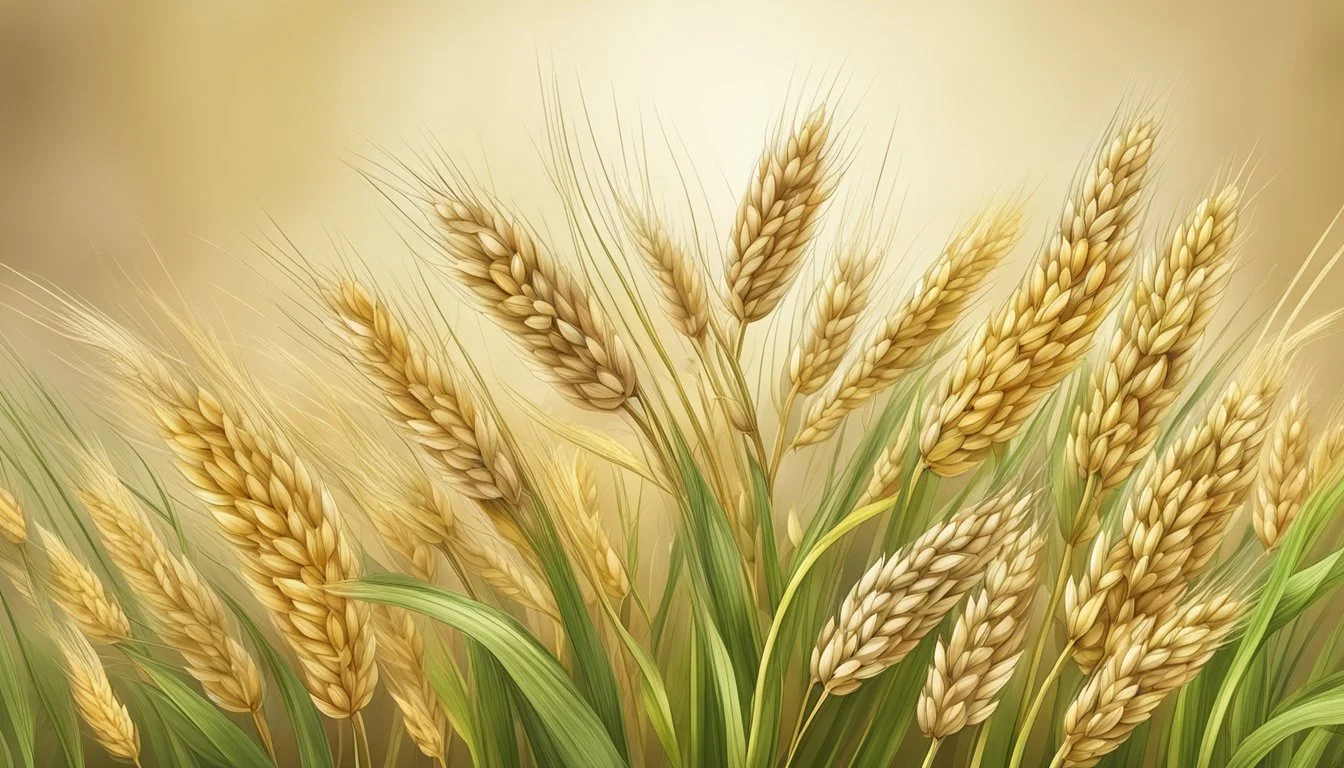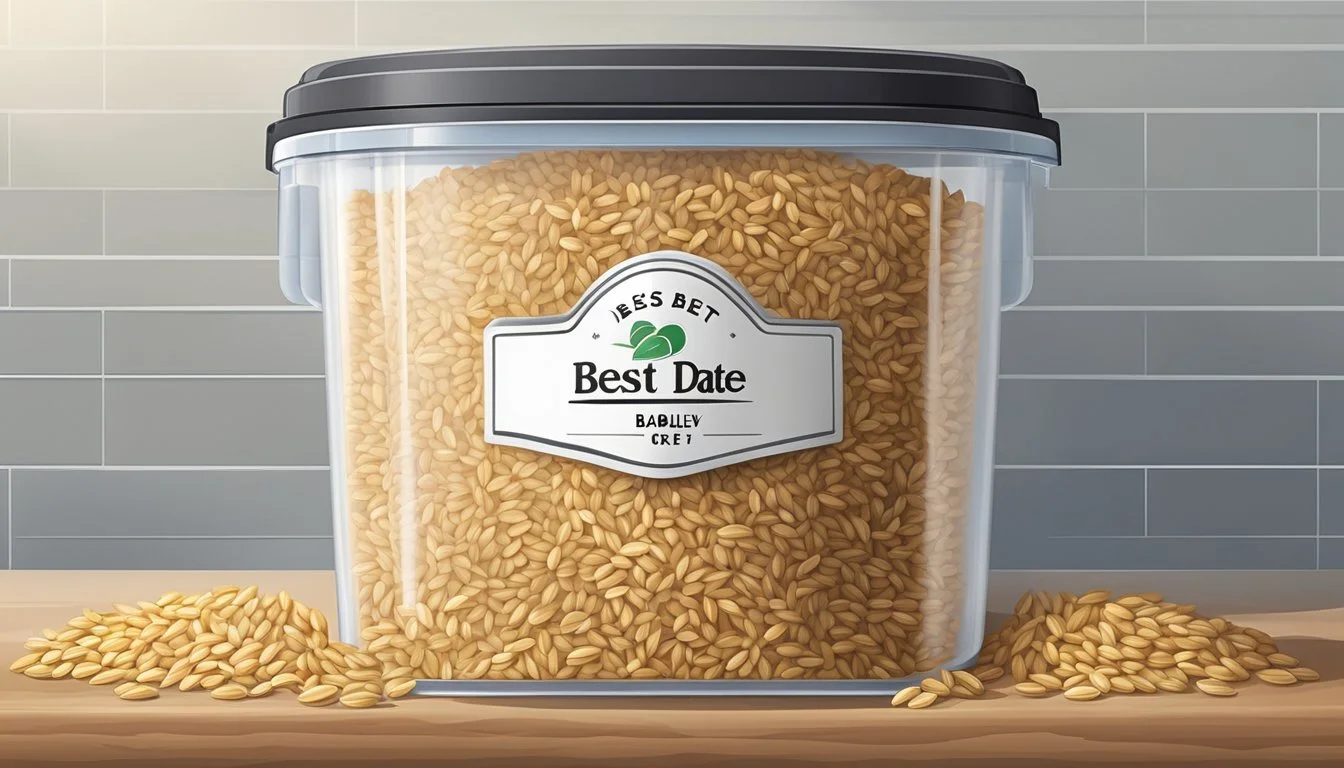Does Barley Go Bad?
Shelf Life and Storage Tips Explained
Barley, a versatile and nutritious grain, can indeed go bad if not stored properly. When kept in an airtight container in a cool, dry place, uncooked barley can maintain its quality for 1 to 2 years. This longevity applies to both hulled and pearled barley, though exposure to moisture or heat can significantly reduce its shelf life.
For those working with cooked barley, it's crucial to know that it doesn't last as long as its uncooked counterpart. Stored in the refrigerator, cooked barley can remain fresh for 1 to 3 weeks, while at room temperature, it only lasts 1 to 2 days. To extend its freshness, freezing cooked barley is an effective method.
Indicators of spoilage in barley include changes in appearance, texture, and odor. Discoloration, mold, or any unusual smells suggest the grain is no longer safe to consume. By paying attention to storage conditions and signs of spoilage, one can enjoy barley in its best quality for a longer period.
Understanding Barley
Barley is a nutritious grain with various types, a rich nutritional profile, and diverse culinary uses. It provides numerous health benefits, making it a valuable addition to any diet.
Types of Barley
Barley comes in several forms, each suited for different types of dishes. The most common varieties include hulled barley and pearled barley.
Hulled barley retains its bran layer, making it a whole grain with a chewy texture and nutty flavor. It is rich in nutrients but takes longer to cook.
Pearled barley, on the other hand, has the bran removed, resulting in a quicker cooking time and a softer texture. Other varieties include barley flakes and barley flour, further expanding its culinary applications.
Nutritional Profile
Barley is known for its impressive nutritional content. It is a good source of fiber, vitamins, and minerals.
A 100-gram serving of barley provides:
Nutrient Amount Fiber 17.3 g Protein 12.5 g Magnesium 133 mg Phosphorus 264 mg Potassium 452 mg
The high fiber content aids in digestion and can help lower cholesterol levels. Additionally, barley's vitamins and minerals contribute to various bodily functions, enhancing overall health.
Culinary Uses
Barley is highly versatile in the kitchen. It can be used in soups, stews, salads, and pilafs, adding a hearty texture and nutty flavor.
For instance, hulled barley can be used in hearty soups and stews, providing a chewy bite. Pearled barley works well in lighter salads and quick-cooking dishes. Barley can also be used to make bread and is a key ingredient in brewing beer. Its mild flavor allows it to blend well with a variety of ingredients, making it a staple in many cuisines.
Health Benefits
Incorporating barley into the diet can yield several health benefits. Its high fiber content supports healthy digestion and helps maintain a healthy weight.
Barley is also rich in antioxidants, which protect cells from damage. The vitamins and minerals found in barley, such as magnesium and phosphorus, are crucial for bone health and energy production. Consuming barley regularly may help reduce the risk of chronic diseases like diabetes and heart disease, making it a nutritious choice for maintaining overall health.
These aspects highlight why barley is considered a valuable addition to a balanced diet, offering both nutritional benefits and culinary versatility.
Factors Affecting Barley's Shelf Life
The shelf life of barley depends on several factors. Key influences include the storage environment and the type of packaging or container used. Proper attention to these elements can help maximize the longevity and quality of the grain.
Storage Environment
The environment where barley is stored significantly impacts its shelf life. Moisture is a primary concern; exposure to high moisture levels can cause barley to spoil quickly. Therefore, keeping barley in a cool, dry place is crucial.
Temperature also plays a significant role. Barley should be stored at a stable, cool temperature to prevent any negative effects that heat can have on its quality. Placing it away from direct sunlight helps maintain its freshness.
Light can degrade barley over time. It is essential to store barley in dark locations or opaque containers to shield it from light exposure. A proper pantry setup that avoids high humidity will help keep the barley in optimal condition.
Proper storage extends the shelf life, making the grain suitable for consumption for up to two years.
Packaging and Containers
The type of packaging and containers used for storing barley is another critical factor. Using airtight containers prevents the entry of moisture and contaminants, which could spoil the grain.
Unopened packages of barley should be retained for as long as possible to maintain freshness. Once the package is opened, transferring the barley to an airtight container is advisable. Clear labeling helps track the storage duration.
Refrigeration can further extend the shelf life of barley, particularly when dealing with cooked barley, which lasts only a few days at room temperature but can last up to a week in the refrigerator. For long-term storage, freezing barley in airtight containers is a viable option to maintain its quality for several months.
Signs of Spoilage in Barley
Barley, like many grains, can exhibit several spoilage indicators that signify it is no longer suitable for consumption. Key signs include visual changes, noticeable odors, and alterations in texture.
Visual Indicators
Spoiled barley often shows visible signs such as discoloration, mold, or the presence of pests.
Discoloration is one of the first signs, where barley turns darker, develops black spots, or shifts from its natural golden-brown hue. Mold on barley appears as fuzzy spots of white, green, or black and indicates fungal growth. Pests, like weevils or moths, leave behind small holes or larvae; their presence can be a signal that the barley has not been stored properly.
Olfactory Indicators
The smell of barley can be a clear indication of its quality. Fresh barley emits a subtle, earthy aroma. Spoilage is typically accompanied by a musty smell or a sour, rancid odor.
These off-odors suggest the presence of bacterial or fungal growth. The musty smell might result from prolonged exposure to moisture, while a sour odor can indicate that the barley has begun to ferment or rot. Avoid using barley that does not maintain its fresh smell profile to prevent possible food poisoning.
Texture Changes
Texture alterations in barley are also critical spoilage signs. Fresh barley should feel dry and firm. Spoiled grains often become soft, slimy, or sticky to the touch.
These texture changes can occur due to moisture intrusion, leading to bacterial or fungal activity. A slimy texture particularly points to significant spoilage. Additionally, any sign of clumping or caking together can indicate that the barley has absorbed too much moisture and is now compromised. Use these textural indicators as a checkpoint to ensure the barley is safe for consumption.
Proper Storage Techniques for Barley
Proper storage of barley is crucial to maintain its quality and extend its shelf life. This involves keeping it in the right conditions, whether for short-term or long-term storage, and understanding the best practices for freezing.
Short-Term Storage
For short-term storage, keep barley in airtight containers. Storing barley in a cool and dry place is essential to prevent it from spoiling. Avoid areas exposed to heat or moisture, which can quickly compromise its quality.
Place the airtight containers in a cupboard or pantry. Make sure the containers are tightly sealed to keep out moisture and pests. Using plastic bags with a tight seal can also work, but it’s best if they are stored in a bin or box to protect the bags from punctures.
Long-Term Storage
For long-term storage, maintaining the right conditions becomes even more critical. The ideal scenario is a stable, cool environment. The temperature should range between 40°F to 60°F (4°C to 15°C).
Airtight containers are non-negotiable here. Ensure the containers are made of materials that can guard against moisture intrusion and pests. A basement or a dedicated storage room can be ideal if it's free from high humidity. Avoid garages or sheds that can have dramatic temperature fluctuations.
Freezing Barley
Freezing is an excellent method for extending the shelf life of barley indefinitely. To freeze barley, portion it into airtight freezer-safe containers or resealable bags. Leave some headspace in the containers for expansion.
Label each container with the date and contents. Store the containers flat in the freezer to maximize space and even freezing. Properly sealed barley will avoid freezer burn, preserving its quality effectively.
These practices ensure barley remains fresh and usable whether you intend to use it soon or store it for an extended period. Proper storage not only preserves barley's quality but also ensures its longevity.
Cooking and Using Barley
Barley is a versatile grain used in a variety of dishes due to its chewy texture and nutty flavor. When properly prepared, it can enhance soups, stews, salads, and more, serving as a nutritious substitute for rice or quinoa.
Preparation Tips
Soaking: Hulled barley benefits from soaking. Place 1 cup of dry grains in a bowl with 3 cups of water and soak for a few hours or overnight to reduce cooking time.
Cooking: To cook barley, boil 3 cups of water or broth. Add 1 cup of barley and a dash of kosher salt. Cover and reduce heat to medium-low. Simmer until tender, which takes about 25-30 minutes for pearled barley and 45-60 minutes for hulled barley.
Storage: After cooking, barley can be stored in the refrigerator for 3-5 days in an airtight container. Ensure it's cooled completely before storing to maintain its quality.
Versatility in Recipes
Soups and Stews: Barley adds a hearty texture to soups and stews. Its chewy texture and ability to absorb flavors make it a staple in these dishes. Add it during the last 30 minutes of cooking for best results.
Salads: Cooked barley can be a great base for salads. Combine it with fresh vegetables, herbs, and a tangy vinaigrette. Its nutty flavor pairs well with a variety of ingredients, adding both nutrition and taste.
Substitutes: Barley can be used as a substitute for rice or quinoa in many recipes. Its chewy texture makes it ideal for dishes requiring a bit more substance. It also provides beneficial nutrients like fiber and essential vitamins.
Flavor Enhancements: Use broth instead of water when cooking barley to enhance its flavor. Adding aromatics like garlic and onions during cooking can also boost the taste.
By incorporating these tips, you can make barley a delicious and nutritious part of your meals.
Maximizing Barley's Shelf Life
Barley's shelf life can be significantly extended through proper storage techniques. Factors like temperature, humidity, and container type play crucial roles in maintaining its freshness and quality.
Best Practices
To ensure barley remains fresh and retains its nutritional benefits, storing it in an airtight container is paramount. This helps prevent exposure to moisture, which can cause the grain to spoil. Cool temperatures between 40°F to 60°F (4°C to 15°C) are ideal for maximizing shelf life.
Additionally, freezing barley in resealable bags, labeled with the date and contents, helps avoid freezer burn and preserve flavor. When kept stored properly, uncooked barley can stay in top condition for 1 to 2 years. It’s also essential to keep storage areas dry to avoid dampness which can cause the grain to rancid.







